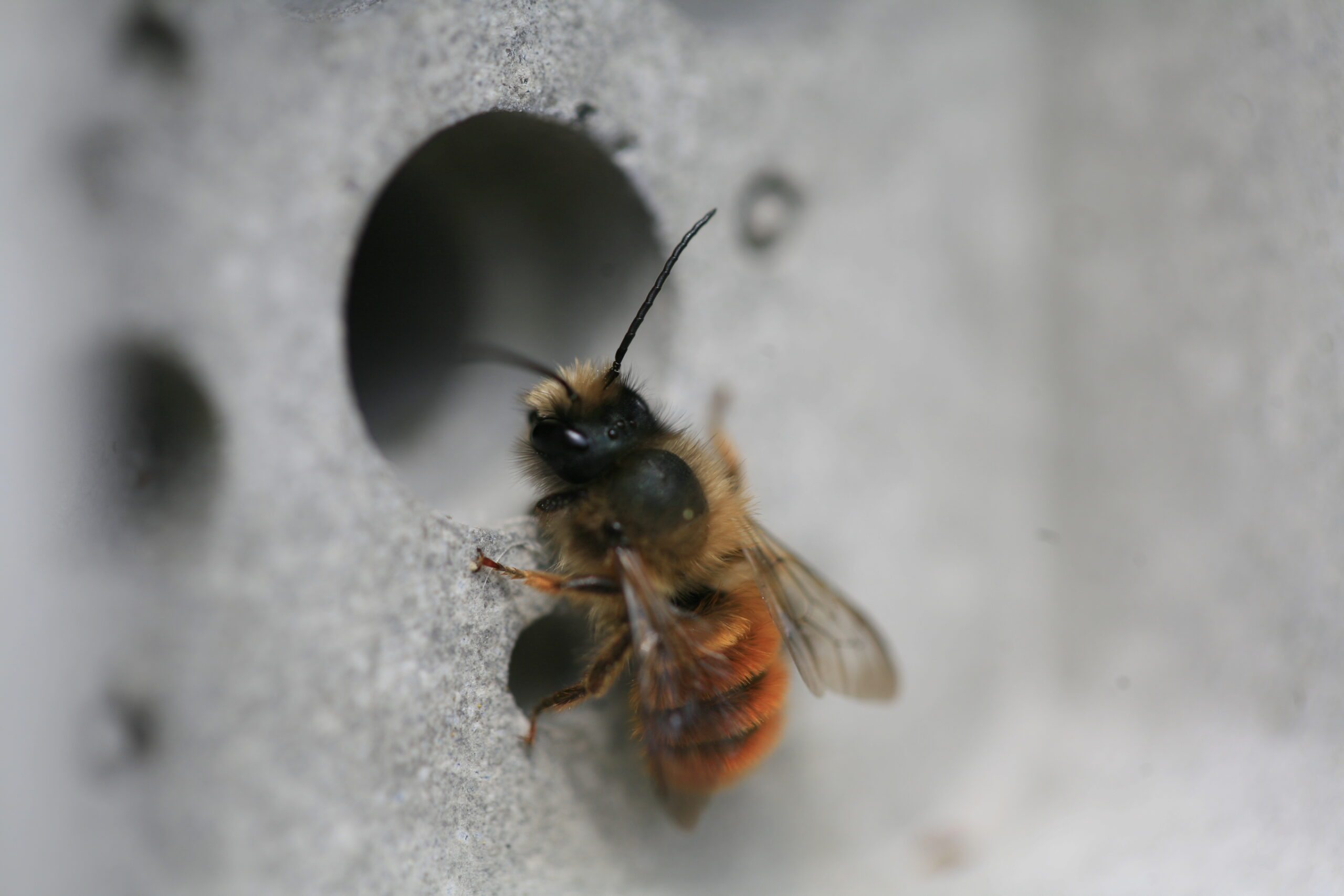Did you know that bees are dying at an alarming rate? Due to changes in the climate, bee populations have seen a significant decline over the past few years. Yet, bees are a cornerstone of the world’s food supply. Without bees, the pollination process that allows crops to flower and fruit would be devastated, decreasing the productivity of our farms. Yet innovative solutions worldwide are being proposed and implemented to help safeguard the bees.
In the small English coastal town of Brighton and Hove, the local government has mandated the use of bee bricks to provide shelter for many species of bees that live there. These bricks, made of reclaimed concrete with various sized holes like swiss cheese, are designed to fit right into brick walls as a replacement for regular bricks.
These bricks are designed to provide shelter for the solitary bees that make up 250 of the 270 species in the UK. As the name suggests, solitary bees live the majority of their lives alone. They find their nests and food on their own, and perhaps most importantly, they reproduce independently. While their more social counterparts, like honey bees or bumblebees, depend on large, healthy hives and a productive queen bee to produce their offspring, solitary bees rely only on themselves and a strong, healthy nest to continue the species. Instead of the grand architecture of the hives used by social bees, solitary bee nests are modest holes that they either find or build to fill with food and seal their young away while they grow.
Inspired by the modest nests these solitary flyers live in the wild, the holes in bee bricks are used to mimic the nests they build or find in the wild while providing a reliable place to inhabit that is integrated seamlessly into modern life. However, it’s understandable that there are reservations about bees living harmoniously with human society. Images of swarming, angry bees certainly come to mind. However, solitary bees like leafcutter bees or carpenter bees don’t sting unless it’s an absolute last resort, and in terms of swarming, they don’t have the numbers to swarm due to their solitary nature. They’re just polite neighbors who quietly go about their business.
Yet, these bee bricks are not only helpful in the small town of Brighton and Hove, and they would be just as effective in America. According to the Xerces Society, there are roughly 3,600 species of bees in the United States and Canada. Of these 3,600, ninety percent are solitary flyers, and many of them could use help. An estimated 50% of leafcutter bees and 27% of mason bees are considered “at risk,” which are considered solitary flyers.
Robert Nemeth, the town councilor behind the Brighton and Hove initiative, says that “bee bricks are just one of quite a number of measures that really should be in place to address biodiversity concerns that have arisen through years of neglect of the natural environment.”
Every measure to save these bees counts. While they aren’t well-known or universally beloved, solitary bees are vital in maintaining a biodiverse ecosystem. They play a crucial role in ensuring our plants and farms grow fruit. The use of bee bricks can help sustain the dwindling solitary bee population.





